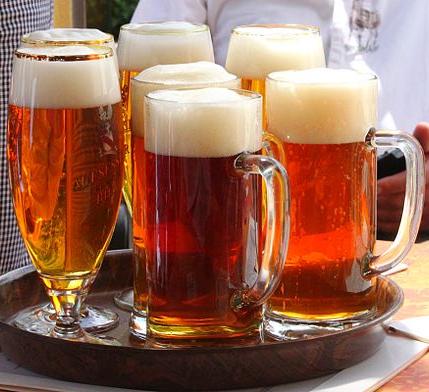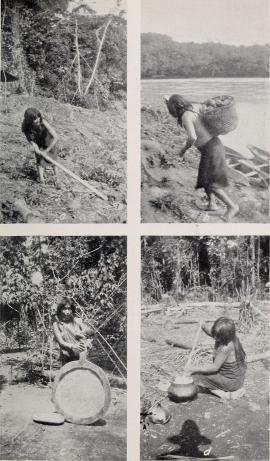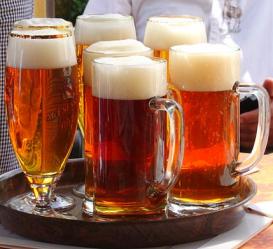by Francesca Bray
Beers and Their Worlds
Though most of us equate beer with its European variant, barley-beer, almost every human society produces some beer-like drink, a mildly alcoholic liquid brewed from locally available starches, one essential product of the local cropscape. Sometimes beer is made from the main food-staple: manioc in Amazonia, for instance. Or the beer ingredient may come from another plant, like Mexican pulque made from agave cactus. Animal sugars can also be used: honey for mead, or milk for koumiss. Whatever the raw materials, beers share two great virtues: they are safer to drink than most untreated water-sources, and they lubricate social intercourse, hence their near-universal popularity.

Tray of Western barley beers, picture released by author
https://commons.wikimedia.org/wiki/File:Aufse%C3%9F_Bier.JPG
Today the big Western and Japanese beer companies have gone global, successfully persuading people around the world that European-style barley-beer is the drink of modern, cosmopolitan citizens. Yet many local beer-scapes have survived in the face of this corporate onslaught precisely because they are local, not global.
Amazonia: The Jaguar’s Beer-Garden
The Napo Runa of Ecuador say that “manioc beer is the life of Runa people.” Runa women grow, prepare and cook manioc for food; more importantly still, they brew it (in pots referred to as wombs) into asua, manioc beer. Men fish and hunt for game; the meat they bring back is prepared and cooked by women and thus converted into food, human sustenance. Runa men passionately desire asua, which women bestow upon them in erotically charged presentations when they return from the hunt. Women as passionately desire meat. Thus every action, every meal becomes a celebration of gender complementarity. Asua itself is celebrated as the essence and breath of Runa being. Meat and asua circulate constantly between related households, or (in marriage feasts) between Runa groups often living many miles apart, binding together the local community and the whole Runa people. Asua embodies Runa ideals of gender, labor and desire, expressing a cosmology in which plants and animals share human perspectives albeit materialized in different forms of substances: jaguars crave blood in the same way that humans crave beer.

Amazonian women preparing manioc beer; Smithsonian, no restrictions
Attribution: Smithsonian Institution. Bureau of American Ethnology -
A focus on beer highlights the role of the Amazonian cropscape in producing particular kinds of human body and social-spiritual identity, as well as moral-material relationships, here conceived of not as restricted to humans but also including animals and plants, the home, the village, the garden and the forest as well as the cosmos.
Asua beer is so closely bound to Runa identity and being that it does not travel. On the contrary, with the penetration of colonial and then global forces asua and many other “native beers” have become symbols of cultural identity and resistance, for instance the post-NAFTA revival of Mexican maize-beers, tejate (“the drink of the gods”), celebrated for its pre-Columbian roots and savors. Probably the most famous celebration of “beer as us” is the song Umqombothi (African beer) by Yvonne Chaka Chaka.

